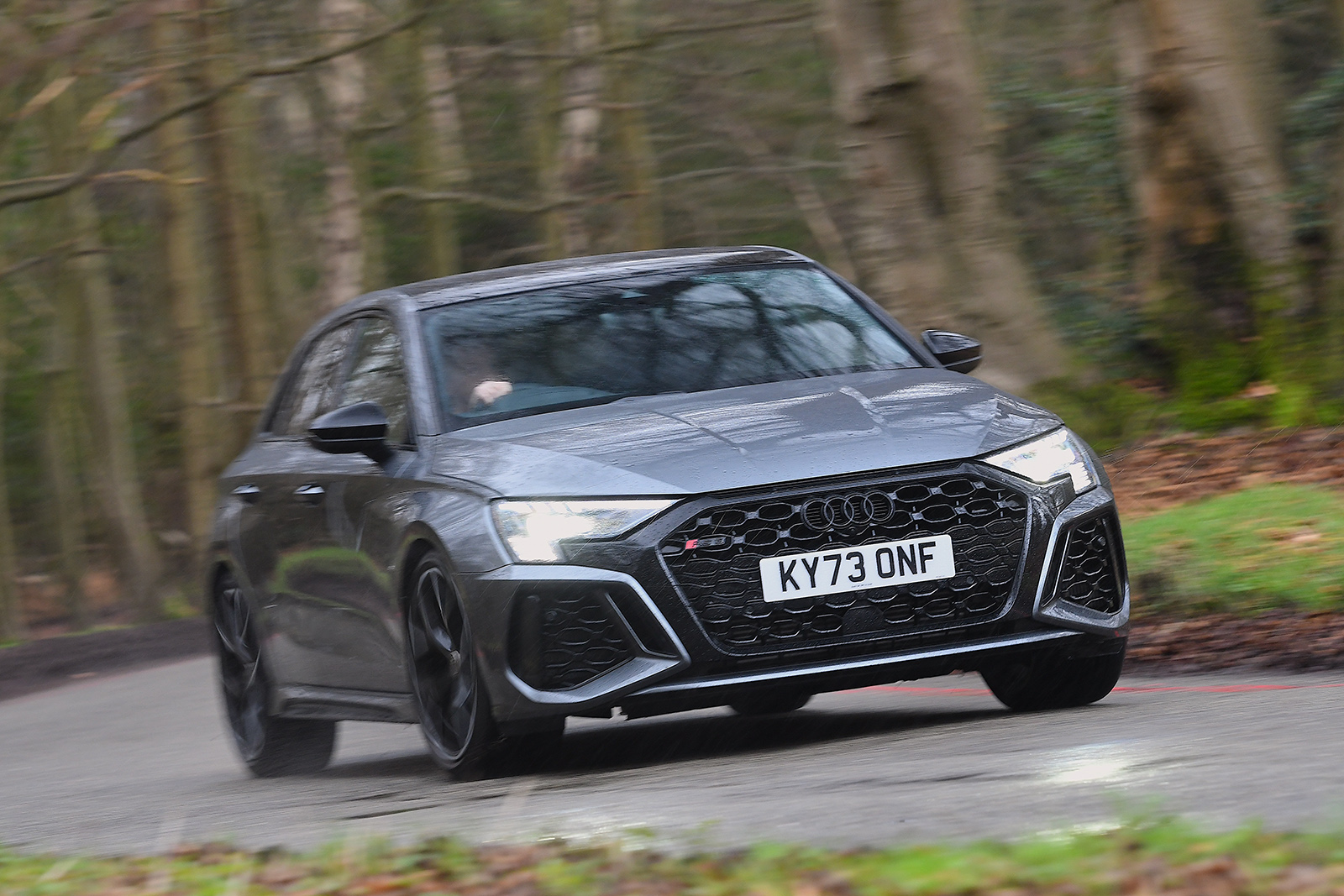The RS3’s body control is generally taut but not brittle or restless, and its four-wheel drive system is just ‘active’ enough most of the time to enrich the car’s handling without making it feel contrived or unnatural.
Audi’s adaptive sports suspension creates a pleasingly calm and reasonably quiet town ride and the steering is light in the tamer driving modes and progressively paced just off centre rather than nervy. There is, in short, Audi’s usual dynamic versatility about this car, even though it has clearly been prepared to do even more dramatic things elsewhere.
And it does do them – to a point. Audi set up two track driving experiences at the launch of this car, allowing us to test the car’s, ahem, drifting potential. We found that it will actually hold a tightish slide around a consistent-radius bend quite nicely in what is called RS Torque Rear driving mode, provided you keep dabbing some positive steering angle in among the opposite lock, as well as its conventional circuit handling.
On the road is where the car’s most meaningful dynamic gains needed to be made, though. Previous-generation RS3s never struggled for outright pace, but they lacked the agile, game, involving handling of rivals. This model isn’t any revelation, but it is notably improved: better balanced through long, faster, sweeping bends, where the driveline has time to shuffle torque and influence the attitude of the car, and with much clearer and more tactile steering feel than some fast Audis provide when you flick into the car’s sportier driving modes.
Through tighter corners, you feel as though you have to overwork the front axle more in order to activate and enliven the rear, and you can spend a long time groping for the natural rotational personality of the car but never fully grasping it. That’s just the way these torque-vectored, four-wheel-drive hot hatchbacks are, though, and there is still clearly a keener, grippier front end here than RS3s have had before.

